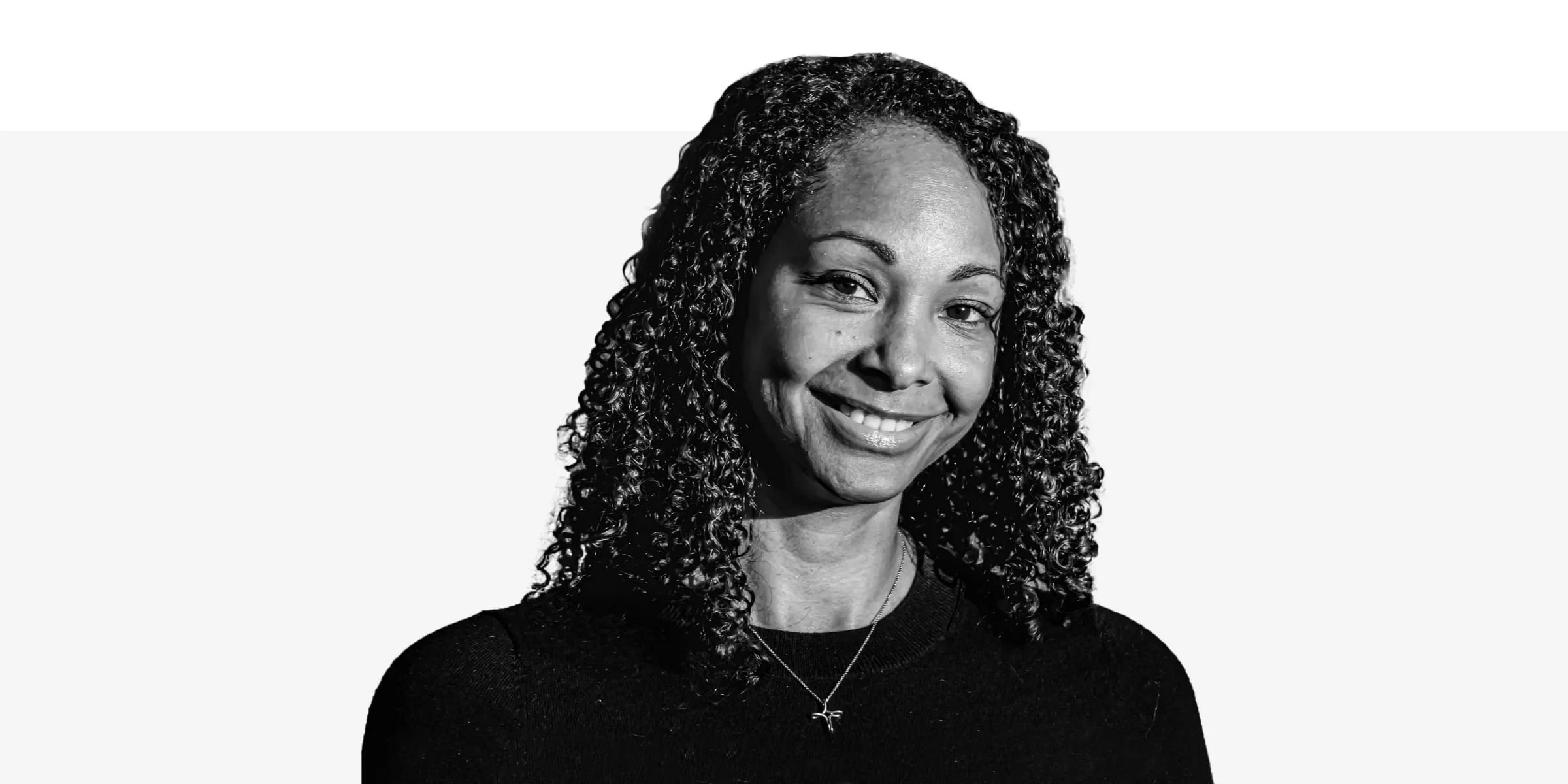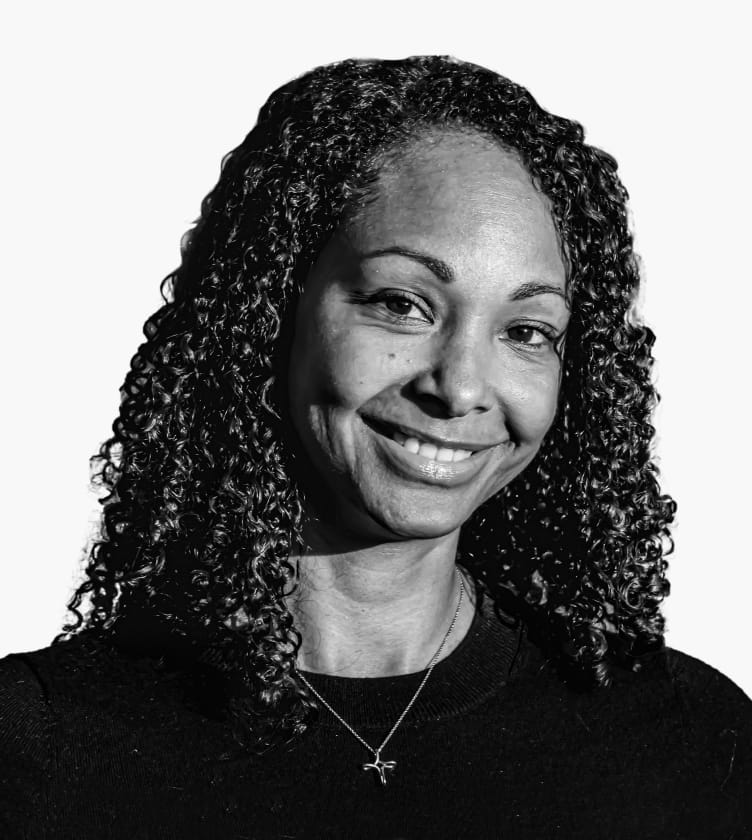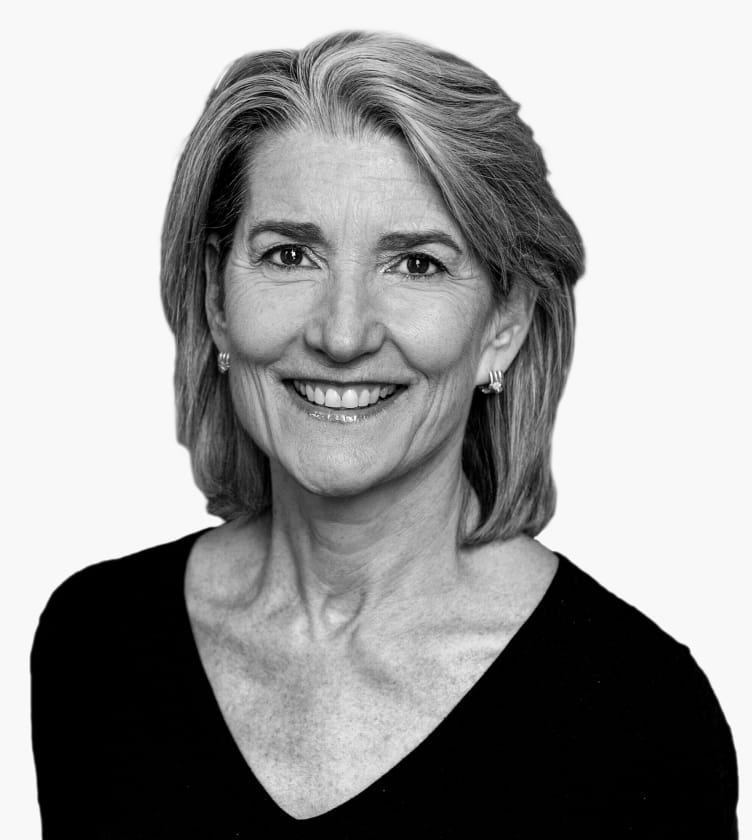Bärí A. Williams says making diversity a top priority, even during a crisis, can help drive business and grow stronger, more inclusive teams.
Bärí A. Williams, author of Diversity in the Workplace: Eye-Opening Interviews to Jumpstart Conversations about Identity, Privilege, and Bias, discusses why an expanded sense of diversity and inclusion is essential to the success of both employees and employers.
On the episode, she shares her nuanced approach to finding social and cultural balance in the workplace; why businesses should encourage vulnerability in conversations among colleagues; the rise of values-based businesses; and her cautious optimism around the future of technology, representation, and workplace health.
Read more about Williams’s four-legged approach to diversity and the steps teams can take to ensure empathy and inclusions are the forefront of their mission here.
Spencer Bailey: Hi, Bärí. Welcome to the Workspace of Tomorrow. It’s such a pleasure to be with you here today.
Bärí A. Williams: Likewise.
SB: To start, given your background and expertise in diversity and inclusion, I wanted to see if you could define those words and how you think about those words for us.
BW: Yeah. I look at diversity as—it runs a spectrum. And it also depends on how you want to use it and what the context is. So, if you’re talking about tech, it’s “representational diversity” versus “cognitive [diversity].” If you’re talking about just the spectrum of diversity, you’re talking about age, geography, national origin, race, gender, sexual orientation, religion, culture. It runs a spectrum, and it really just depends on what is the context in which you’re choosing to use the word.
SB: Your new book, Diversity in the Workplace, is set up in these five categories of identity: race, women, LGBTQ+, ability and age, and religion and culture.
BW: I have to amend the LGBTQ+ section now, which I’m actually super-excited about, because I made a whole point about how they don’t have federal protection. And now… Which is awesome. So, I’m happy to make that change.
SB: [Laughs] You describe it as a sort of “guided tour of what it means to be a minority in the workplace”—your book, that is. I’m wondering, what were some of the key things you learned throughout the process of writing it? I know it’s been probably a sort of lifetime and a career going into this book.
BW: I think it probably has been a lifetime and a career worth of that. [Laughs[ Just even based on my own background: My grandparents, my grandmother came here from Tulsa, but they were born on a reservation in Tahlequah. And my dad’s parents were sharecroppers in Mississippi, and they sharecropped on the land on which their grandparents were slaves. And they had third-grade educations. So, being able to go, in two generations, to having not even graduated, being promoted from elementary school to somebody having multiple degrees is an accomplishment in itself.
What I learned from this was, most people are intersectional in some form or fashion, if you look at it on that spectrum of the things that I previously named, whether it’s religion, or culture, or gender, or race, or sexual orientation, or age, or geography. People span a range, and that was the thing that I really appreciated the most, was just even to hear their individual stories.
SB: Could you, connected to this, define inclusion for us? What does it actually mean?
BW: Inclusion, to me, means that you are actively listening to someone and taking note of their ideas. You implement some of them. You may not implement all of them, and they also feel comfortable in the space in which they’re in, and you’re actively working to make them feel comfortable, and they’re going to make you feel comfortable in turn.
But for people who are in marginalized communities in particular, inclusion is especially relevant because you can find really great talent, but if the environment is not inclusive to them, meaning they are not given opportunities to have mentors, or not given opportunities to socialize, or not given opportunities to have their ideas heard, they won’t stay. Then it turns into a retention issue.
SB: What do you think COVID-19’s impact has been on diversity and inclusion?
BW: I think it has been horrible. The largest segment of business owners in the last, I think, eight to ten years has been black women. If you’re talking about even just small business owners, they’ve had to shatter their businesses or at least put them on hold for now. That could have a huge impact in terms of reverberations for generations. It’s very hard to catch up after something like that.
And if you look at it from a corporate perspective, there is layoffs.fi. That is a tracker that tells you all of the tech layoffs, and there are some that actually release the names of the people who are let go from the companies. Even if you just scan it, if you just use your cognitive ability to look at certain names, you can figure out the gender and the race of the person. The bulk of the people who have been laid off in this pandemic have been women and people of color.
But that is also because we tend to congregate in service orgs and those are the first things that get cut: marketing, sales, HR, diversity, all of those sort of G&A [general and administrative] functions are the first things that go.
SB: You’ve written that diversity is a “nice to have, not a must-have” during a crisis, and especially during a recession, which we’re in both right now. Why do you think it gets put on the back burner so often?
BW: I think part of it, at least from my understanding of being in tech, is that fifty-two percent of tech employees are referrals. Meaning, this person probably didn’t even formally apply. It’s just a friend slipped a résumé to somebody. If that’s the means of how you’re job creating, that means a lot of people are being shut out of that process because you may not have a friend who works there or you don’t know somebody who works there.
And the other piece to that is, people tend to refer people who look like themselves or remind them of themselves. That’s also who people mentor, and that’s also who people sponsor. It’s a “nice to have” because you’re thinking about when you’re calling these lists—that’s one of the reasons why I’m curious about how people make those decisions for a layoff. If someone’s output is greater than another’s, why would you let that person go? Then the answer turns out to be, “Oh, well, he’s best friends with the head of marketing.”
So, you’re making decisions based off of relationships and not necessarily productivity. To me, that doesn’t make a ton of sense, but a lot of people do it. That’s why it becomes a “nice to have,” because it’s, okay, well, this person has been here based on tenure. Okay, great. They’ve been there for three years, but their output isn’t better than the person who’s been here one year. But oftentimes that’s how decisions are made, and they’re made in cloak-and-dagger backrooms where you’re not necessarily using metrics.
SB: Do you think these protests have helped put some of this on the front burner? And what effect ultimately do you think Black Lives Matter or even the recent Black Trans Lives Matter protest can have on the workplace?
BW: Yeah. I think that the effect of the protests will make people pay more attention. But my larger concern is, I don’t want this to be the cause du jour. It’s the same thing as when marriage equality happened and everybody was all about that for about two months. To me, this is not a moment, it’s a movement. And you don’t want people who are just looking at it as a moment and an opportunity to change your Twitter avatar or put something on Instagram, and they’re like, “Great, we’re done. We said Black Lives Matter, now we’re done.” It’s like, no.
If you want to think of diversity holistically, you’re going to think of it as a four-legged stool. You should be thinking about your employees, your customers, your board members, and your suppliers. If you’re not thinking about it that way, you’re not doing it right.
SB: Obviously diversity leads to success on so many levels. I’m curious, from your perspective, what you view some of the business cases are for diversity?
BW: You can look at it from different viewpoints. You can look at it from a product standpoint, meaning if you look at, let’s say, Facebook or Twitter in content curation and takedowns. There are certain cultural phrases and vernacular and acronyms and colloquialisms that if you’re not aware of that, you’ll flag it as being offensive, and it’s actually not. There are certain things, just in terms of product usage with content, that could be an issue. Then you have issues around product where, if somebody had been in the room, maybe a different marketing decision would have been made.
It runs the gambit. It could be the actual product. It could be even thinking about it from a differently abled perspective. Like, certain apps or things that you’re looking at. The interface—can a blind person use this? Can a hard-of-hearing person use this? If nobody is thinking about those things or beta-testing for those things, you’re going to end up with a faulty product, or at least a product that is not inclusive.
SB: In what ways should companies be pursuing or encouraging the sort of social justice and activism that I think is happening out in the world right now but not necessarily internally at an organization? How should they encourage this?
BW: Honestly, some of it is just being aware. You have to think about it from the context of: You’re having team meetings and everyone is talking about what they watched on Netflix last night. Well, I don’t care about what you watched on Netflix last night, because I was explaining why there’s a third person killed in as many weeks to a nine-year-old. I’m sorry that I’m not interested that you watched Love Is Blind last night. Don’t care. Not pertinent.
I would just say for people to be mindful of the fact that everybody is experiencing this in a different way. Even people who don’t have kids, and even people who are not of color. It’s hard to be stuck inside for three months. But it’s even harder to be stuck inside for three months and watch all of this, and know that you’ve experienced some essence of this, but you have to act like everything is normal.
SB: You bring up such good points, and I’m curious, now that we’re not working or necessarily working in a workspace, but one day, hopefully, we’ll return. [Laughs]
BW: One day, outside, we’ll reopen. [Laughs]
SB: Yeah. How do we create vulnerability? How should leaders be thinking about vulnerability in the workspace?
BW: I would just say it’s being cognizant of what’s going on around you in the world. Don’t watch Netflix every night; sometimes turn on the news for an hour or two. I understand that oftentimes what it is is that people just don’t want to have uncomfortable conversations. I had a bunch of people who didn’t want to talk about this at all, and then I had some people who specifically reached out to talk about it. I’m just, like, exhausted on both ends.
SB: Mmhmm.
BW: Because I’m sitting here watching it, living it, have done that. My husband went to one of the protests, and I don’t always want to talk about it, but I do at least need you to acknowledge it. I think the hard part about that is just putting yourself in other people’s shoes and also not being afraid to have hard conversations. And also being aware of what you don’t know. And sometimes you don’t know what you don’t know.
But asking questions. Like, “Hey, how does this make you feel? Or hey how…?” Just making sure that you’re alright. Things like that sometimes go a long way at least just showing a little bit of empathy versus saying nothing because that’s the whole notion of being silent, is being complicit.
SB: Right. And, as leaders look to address these issues externally and internally, how do you recommend establishing platforms or opportunities to create these conversations?
BW: To me, it’s really just being aware of what’s going on and not being afraid to broach the subject. Because everybody sees it. It’s just that people are not comfortable bringing it up and talking about it.
So, for me, I would say, just the acknowledgement. Sometimes that will just open the floodgates and let people ask questions or feel okay.
SB: We’re talking about work but then there’s the work. The work is something that you have to want to do from inside, right? It shouldn’t be something that a CEO tells you to do necessarily. Although I’d be curious to hear your thoughts on what you think a CEO should tell their staff on that front. Ultimately, it’s still going to have to come from within, but I do think that there’s a certain power in being a company leader and leading by example or showing the way.
BW: Yeah. I completely agree with that, but I also think that there needs to be a very clear authenticity to that, because people can detect when something is not real. If it’s forced, they’re not going to be motivated.
I don’t think it necessarily always has to be a CEO who’s leading it. Sometimes it could be other people and you learn by example, or you learn by watching. It doesn’t have to be somebody literally telling you, “Hey, this is what the company is going to do.” Well, what the company may do may also not be what people want to do. They may want to be more active, or they may want to be less active. I think it’s good for the company to set a benchmark and then let people go in whatever direction they want after that.
I don’t think leadership always has to be top-down. Sometimes you lead from the back. It’s bottom-up instead of top-down, and you demonstrate the type of leadership that you want to see.
SB: In terms of remote working, getting back to work and the office, and just workspace safety and PPE, what are some things company leaders should be thinking about from the perspective of diversity and inclusion?
BW: I would say, particularly for certain populations, you need to be mindful of if they have comorbidities. So, if you have underlying conditions. And the other hard part to that, from a legal perspective, as well, is you don’t want people to disclose their health information to you if they don’t have to, and you don’t want to make your employees feel like they have to. But if you do have certain illnesses, you shouldn’t be back in the office. Unfortunately, that tends to plague black and brown and indigenous people and those were already differently abled. So, those groups are probably going to be higher risk in terms of returning to work.
So, how do you adequately support them and also make them still feel included while they’re working remotely? Those will be the first things I would think of.
And then, how do you accommodate them if they do come into the office in terms of reasonable accommodations? Do they need special work setups, do they need to be a further distance than six feet? It’s thinking through reasonable accommodations under ADA, and what does that look like now in the age of COVID?
SB: We’ve been seeing in recent years—and continue to see—a growth in values-based businesses. I’m wondering from your experience and your point of view, what do you think some of the core values to be successful and a healthy operation a business should have?
BW: I think if there is anything that I have gotten, even just out of my personal experience and the experience of some of my friends, it’s just empathy. Just a drop of empathy goes a long way from people, whether it’s understanding that no, I cannot have meetings back to back from 9:00 to 3:00, because I still have to coordinate a child’s Zoom and also I’m the lunch lady, and also go to the bathroom. No, I can’t meet straight from 9:00 to 3:00, that’s just not realistic.
If we were in the office, probably, yeah, I could do that. But that’s not the case now. So, it’s just being understanding of the fact that people are on different schedules, and as long as the work gets done, and they’re giving you the information that you need in a timely manner, that shouldn’t be an issue.
My mom always says you can’t pour from an empty cup. So, if you were just draining your employees because you’re like, “Oh, well, you’re at home, you don’t have to commute, so I should be getting another two hours a day out of you,” that’s not empathy and that’s also going to lead to burnout and you’re not going to get anything out of somebody who’s burnt out.
SB: Back to diversity, I think that there is a certain, one might even call weaponization of language, that limits or even pushes against certain peoples. Could you talk about the value of deeply thinking about the words that you use whether it’s on a job posting or internal communication or even language on your website?
BW: They all give cultural cues, in terms of the diction that you’re using and even how you’re phrasing it, the pictures that you pair it with—all of those things are incredibly important.
And I would say, to a certain extent, it becomes even more important once you have those employees inside the organization how you use diction in reviews. Are you calling a woman “aggressive” because she’s not doing anything different than her male counterpart? Are you saying that somebody was “too assertive,” and really they weren’t doing anything different than someone else?
So, it’s parsing through those kinds of things where it’s just you have to be aware of your own unconscious bias, which is hard. But it’s like, you want your women employees to be nice, but you’re fine with your male employees being aggressive. Well, if they’re doing the same thing, why is that a problem?
So, it’s also sometimes just checking yourself in terms of why am I using this language? Why do I think that this language is a good descriptor of what it is that I’m looking for whether it’s a candidate or to put on the website in order to describe the company? A lot of people don’t want to do that self-reflection, or are not even aware that they should do it.
SB: To close, what are some of the changes ahead that you’re most excited about and hopeful for?
BW: I’m very curious to see where the last three weeks of protesting and demands, where is this going to go. I’m very curious from the perspective of, one) being a lawyer, and two) from being a black woman and having black children and a black husband, because I would love to make sure that they’re safe. I’ve already had the talk with my nine-year-old. I had it with him when he was six. I would love to just see where that goes in terms of making progress with criminal justice reform.
I’m also very, very interested in seeing where certain technology goes, in terms of facial recognition technology and A.I. machine learning, and the combination of all of those, and how they can identify you, and how that can be weaponized, and what are we going to do from a policy standpoint to prevent that.
SB: How do you think these things might come to life in the workspace, in a positive way?
BW: The hard part is, some of the technology companies are going to feed into government systems, so literally, they’re intertwined. How you figure out data portability and privacy and facial recognition technology and A.I. based off of old data. You’re feeding that into a government database, and if that government database is using that information in regards to criminal justice, they’re all intertwined to me. So, I would love to see something that provides protection, particularly for people in marginalized communities that have already dealt with both of these issues, for it to not be weaponized against them. But that means we need people who are really thinking about that kind of policy and thinking about those issues, and I don’t know that a lot of people are thinking about them.
SB: Are you hopeful that when your nine-year-old is working age that we’ll be in a place where it’s better and healthier in the work environment?
BW: I’m hopeful. I would say I’m cautiously optimistic. I had an aunt who—she’s now deceased, but she was born, I think, in 1918. My grandmother’s sister. She was super-excited to pick during the primary between Hillary and Obama, because she was like, “Oh my God, it’s a woman and a black guy. I’ve never thought I would see this.” So sometimes it happens. So I’m just going to keep the hope of auntie Nita. Sometimes it happens.
SB: Bärí, this was so great. Thank you so much for your time. It was a real pleasure to speak with you today.
BW: Likewise. Thank you for having me.



